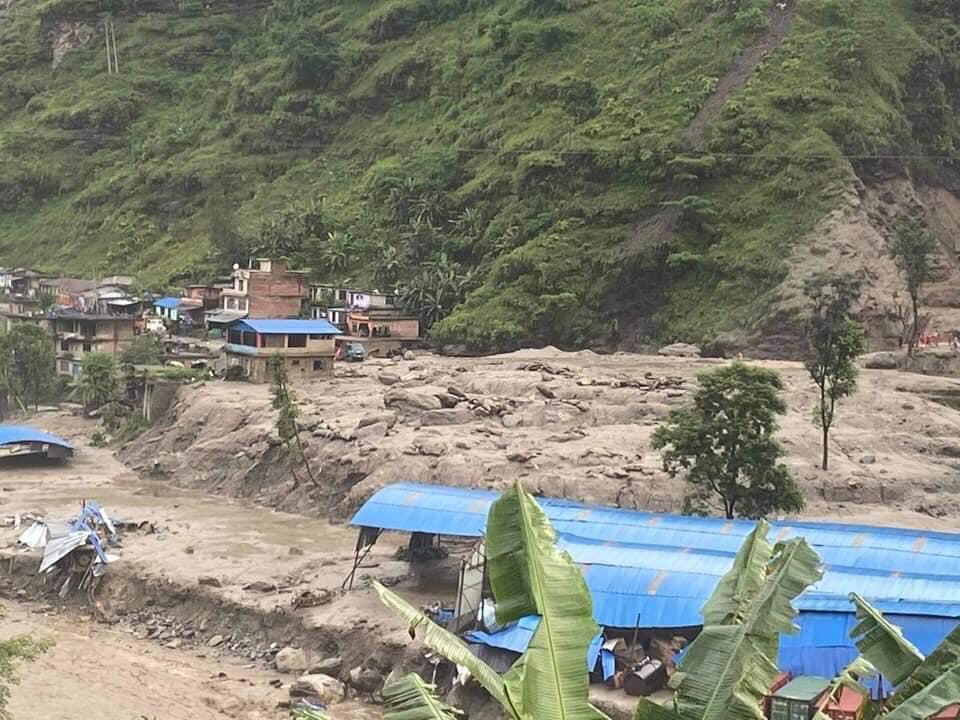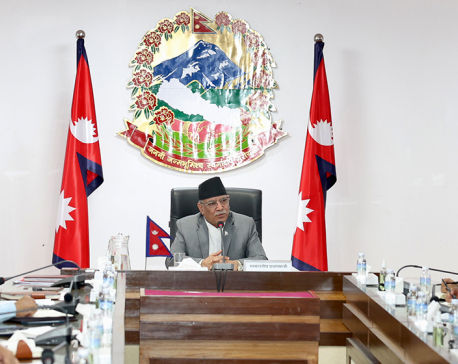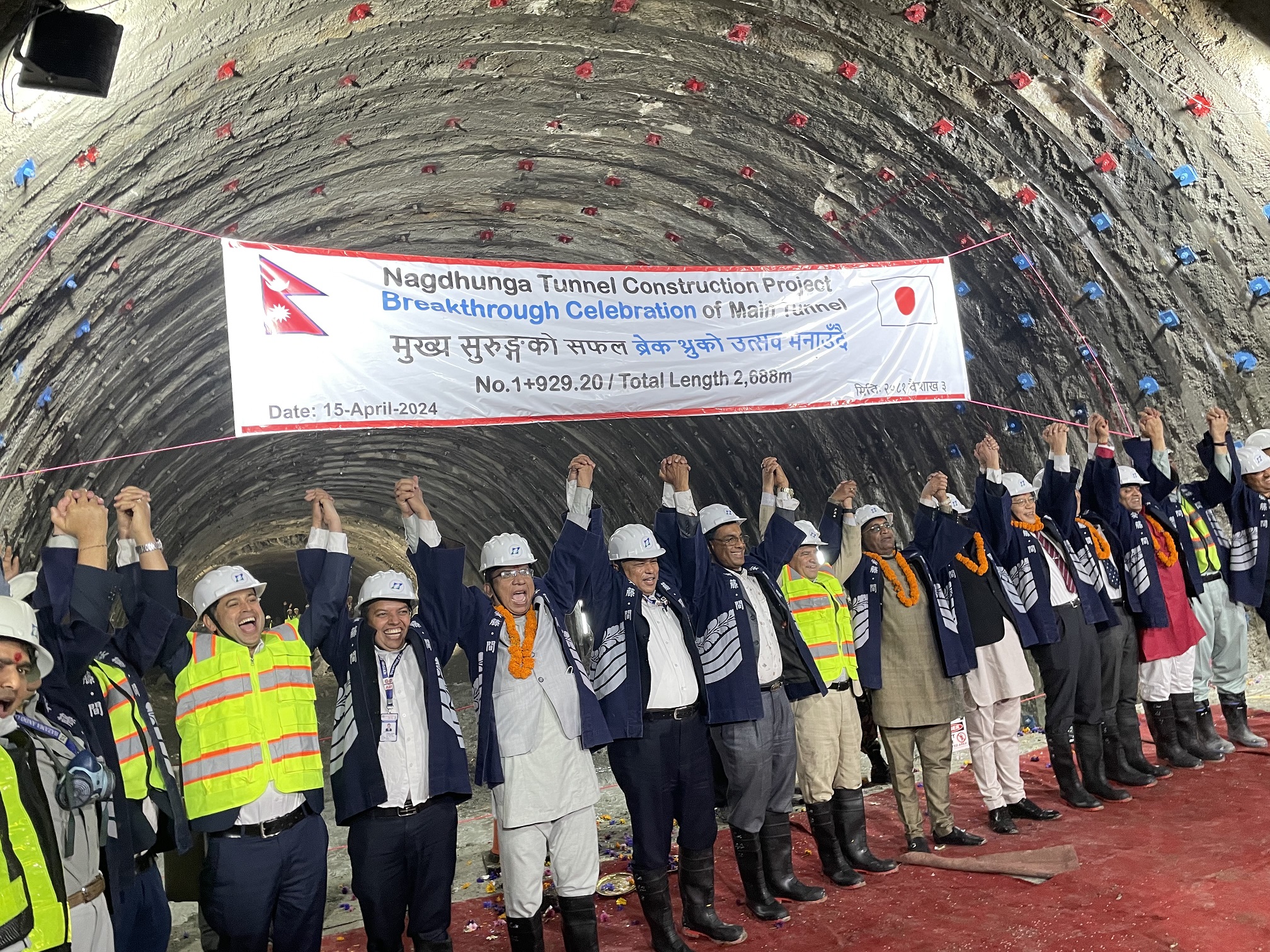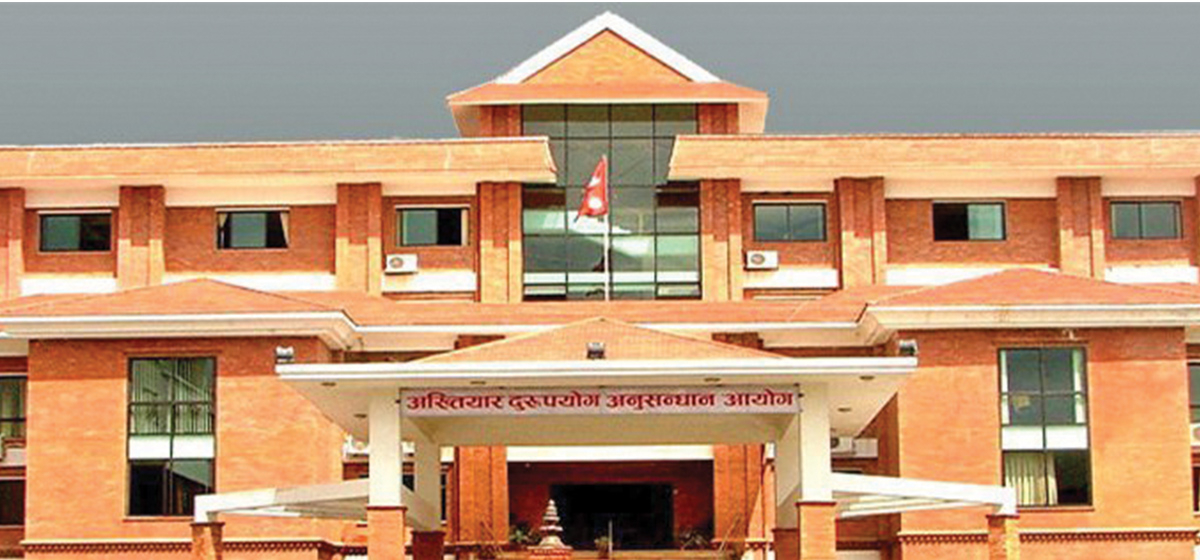
OR
Monsoon is changing, but we have not
Published On: July 25, 2020 02:19 PM NPT By: Rocky Talchabhadel and Bhesh Raj Thapa


Rocky Talchabhadel and Bhesh Raj Thapa
Er. Rocky Talchabhadel, PhD ( Post-Doctoral Researcher at Kyoto University, DPRI, Japan) Er. Bhesh Raj Thapa, PhD (Principal at Universal Engineering and Science College, Chakupat, Lalitpur)news@myrepublica.com
More from Author
Just between June and July this year, 89 people died and 278 families were affected by landslides around the country; 17 lost their lives after being hit by thunderbolt and 77 families were affected. Similarly, three died and 93 families were affected by floods. Just this week, 59 people died by landslides and two from flood, 137, 123 and 29 families were affected by landslides, heavy rainfall, and floods respectively associated with extreme events.
All these incidents, which took place as Nepal grapples with the Covid-19 pandemic, are a reminder that the monsoon is changing, but we haven’t changed our approach to living with it.
Following the disasters, the government’s main focus was to conduct rescue and rehabilitation of victims rather than find out the root cause of the problem and address it through policies and planning.
Nepal’s fragile geological structures, rugged topography, soft and unstable rocks, and seismic activities coupled with population growth, poverty, illiteracy, deforestation, unscientific agricultural practices, land use changes, and developmental activities such as construction of roads, irrigation systems, hydro-powers and urbanization are making the country vulnerable to several natural disasters, most of them water-induced. Add climate change to that potent mix, and we have a recipe for disaster.
Let’s look at some examples. During the 2008 Kosi floods, the eastern embankment of the river was breached near Kusaha village, Nepal, about 12 km upstream from the main barrage even as flow in the river was below average for that time of the year. The event was attributed to the heavy monsoon downpour and poor maintenance of embankments and ineffective operation plan of the barrage gates.
Similarly, between July 19 and 21, 1993, the discharge of Bagmati River increased by two orders of magnitudes (from hundreds ,160 m3/s, to ten thousands, 11700 m3/s), the huge amount of sediments transported (estimated to be 100 Mm3) caused extensive damage to infrastructure and took a heavy human toll of around 2,000 deaths. Almost 66 percent of the dead volume of the Kulekhani reservoir, one of the biggest in Nepal, was filled by the single event. Over 300 landslides of various sizes, numbers of debris flows, and multiple small gullies were observed.
A large monsoon depression hovered directly over central and eastern regions of the country resulting in the highest-ever 24 hour accumulated precipitation of 540 mm on 19-21 July. The hourly rainfall intensity during the cloudburst event was 70 mm/hr in a region where about 40-50 mm/hr rain is common.
There are many such incidents of different magnitudes and severity recurrently happening around us every year. To look at the wider trend of precipitation-related weather extremes across the country, we analyzed daily rainfall and corresponding stream-flow observations between 1976 and 2015, at 27 river gauging stations (major rivers) and 28 precipitation stations distributed across the country.
For each station, we looked up the biggest daily flow rate events and the largest daily precipitation in a year across the country. The amount in terms of annual precipitation was not significantly changed between 1976 to 1995 and 1996 to 2015. But we saw that the frequency of events in which rainfall takes place for five consecutive days and river discharge reaches the maximum had increased during the latter half of the period under consideration.
We also noticed a new pattern of flooding in the southern plains of the country during the monsoon season. We observed that the number of days when daily rainfall exceeds 50 mm was also increasing in the southern region of the country. We also found that the number of days with heavy precipitation is increasing and flows in the rivers are also significantly rising in southern Nepal, which was even vivid after the year 2000.
Extreme precipitation events were reported the most in the western region of the country (Province Sudur Pashchim), and southern belts of the country (Provinces 2 and 5). Changes have been less dramatic in the eastern region of the country (Province 1).
In terms of increased flow in the rivers, seven stations (Thulo Bheri at Rimna, Chepe Khola at Garambesi, East Rapti at Rajaiya, Sunkoshi at Khurkot, Dudhkoshi at Rabuwabazar, Tamor at Mulghat, Kankai at Mainachuli) reported a 25 percent increment in average yearly maximum peak discharge. The situation is more alarming for East Rapti, where more than 80 percent increase was recorded. It’s likely to be a combination of long-term effects such as climate change combined with short-term weather variability.
Various studies have shown that peak flows in rivers increase after they fail to confine the flows within their conveyance channels; and hence flooding/inundation occurs. In addition to this, natural degradation like timber and river bed materials such as sand and boulders of Chure since long years have increased the flooding events in the Tarai region—2015, 2017 and 2019 Tarai flood events were live examples.
We observe that medium size rivers originating from middle mountain ranges such as Kankai, Kamala, Bagmati, East Rapti and West Rapti are causing more flood problems than the large rivers such as Koshi, Narayani and Karnali. Similarly, rivers originating from Churia such as Kandra, Khado, Ratu, Mohana, Lal-Bakaiya, Hadiya, Biring and many more are causing frequent inundation problems. However, the monitoring of rivers is limited to medium and large river basins.
We see that the nature of the monsoon and its impacts on the rivers is changing at a rapid pace, but we are yet to develop a sound understanding of likely hazards, available capacities to combat hazards, underlying vulnerabilities and overall risks first needed for an effective mitigation of adverse impacts of disasters.
Risk maps, for example, can be used as a guiding tool for development and disaster mitigation plans. A proper decision-making body at the community to national level is greatly needed for this. Such bodies could determine the type of structures that can be constructed at a given location taking into consideration the risk of floods, landslides, or any other hazards.
Response to a disaster is always necessary but our focus should be on anticipating disasters beforehand. In general, the current practice is to allocate a big chunk of budget and efforts on the response and recovery, but prior planning is very limited.
The roles and responsibilities of the three tiers of government assigned by the Disaster Risk reduction and Management Act (2017) have not been properly executed. Nepal Disaster Risk Reduction and Management Authority and the Department of Hydrology and Meteorology are trying to reach the people through bulletins and social media, but are the agencies coordinating with each other or the local governments?
How are the affected people getting information? Are they getting information in advance? Are they using early warning systems?
We can see some collaboration between DHM and telecommunication providers such as NTC, and Ncell to disseminate early warning information through SMS, and also through social media. But are these effective?
Finally, during the current Covid-19 pandemic, special attention and proper planning are needed, especially when it comes to evacuation of people at risk of hazards as social distancing norms have become equally important as safe evacuations.
Talchabhadel is a Post-Doctoral researcher at Disaster Prevention Research Institute, Kyoto University, Japan. Thapa is the principal at Universal Engineering College, Chakupat, Lalitpur
You May Like This

Nepal's Forests in Flames: Echoes of Urgency and Hopeful Solutions
With the onset of the dry season, Nepal's forests undergo a transition from carbon sinks to carbon sources, emitting significant... Read More...

Live and let die, Sarkaar!
Some time ago, in a dazzling display of our Prime Minister’s political finesse, he revealed yet another populist spectacle; his... Read More...

'Victim blaming'- Nepali society's response to sexual violence
Multiple studies show that in most sexual assaults, the attacker is someone known and trusted by the victim. ... Read More...



Just In
- Birgunj Metropolis collects over Rs 360 million in revenue
- NEPSE plunges below 2,000 points after one and a half months; daily turnover declines to Rs 2.10 billion
- AI Index Report-2024: AI still behind humans on complex tasks like competition-level mathematics
- Daiji-Jogbudha road construction at snail’s pace
- Govt fails to adopt podway technology despite its potential in Nepal
- Jhulaghat border crossing in Baitadi to remain closed from this evening
- Universities will be free from partisan interests: Education Minister
- CIAA files cases against five, including ex-chief of Social Development Office Dolpa
















Leave A Comment